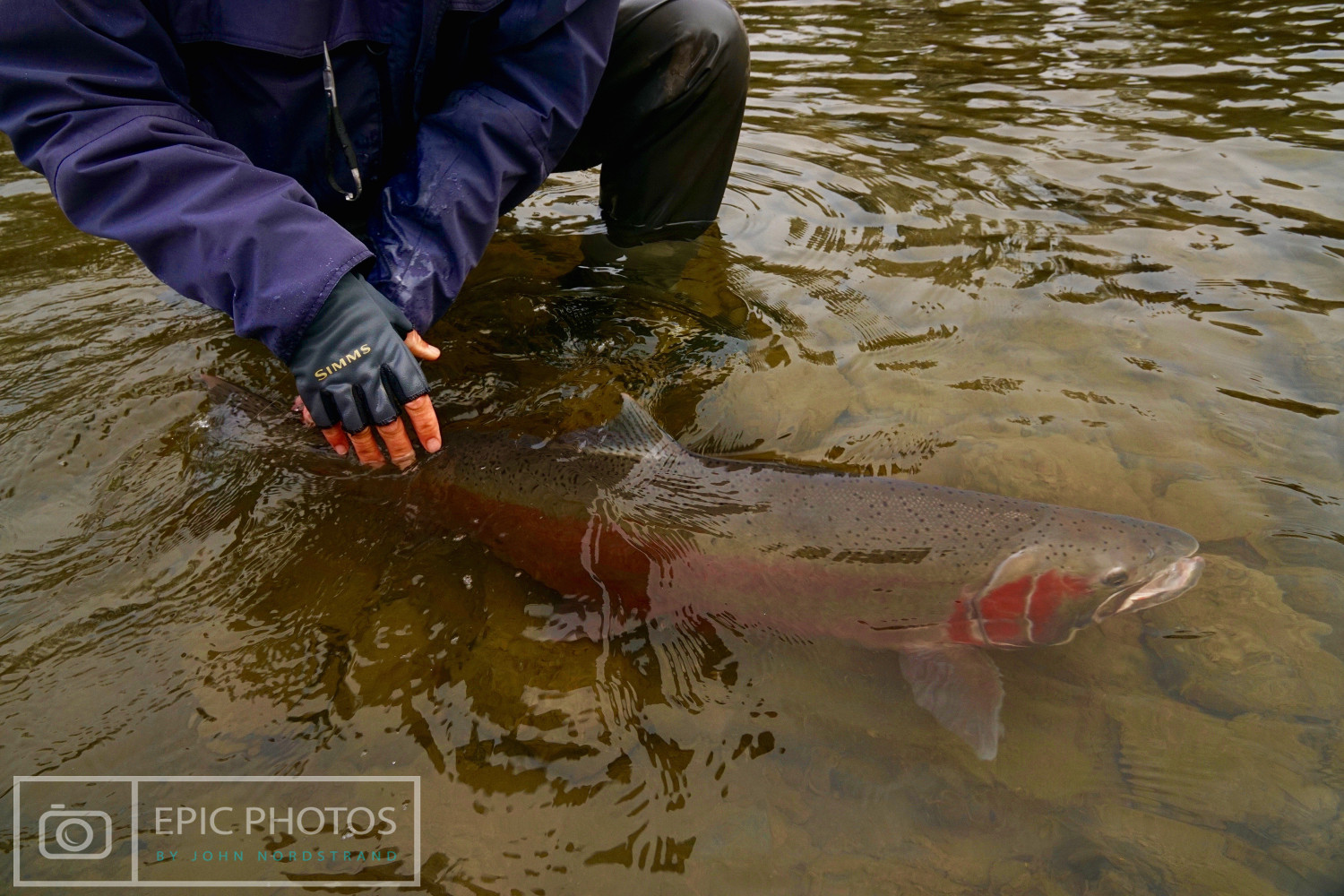Santa Barbara Fish and Politics
Mayoral Candidate Hotchkiss Goes Too Far on 'Wasted' Water

Since I was 8 years old, roaming around the logging roads of the Siletz River on the Oregon coast with my father, I have had a love affair with the amazing steelhead. Now the few that remain in Santa Barbara are once again being endangered for political reasons.
First, just a bit of history. Up until the late 1940s and prior to the construction of the Bradbury Dam in 1953 — the dam that created Lake Cachuma — the Santa Ynez River had one of the finest runs of Pacific Coast steelhead on the West Coast. Steelhead are rainbow trout that are born and then reside in their natal rivers for about one to three years, and then go to the ocean to live for another one to four years. They return as large fish ranging from about four to 20 pounds.
It is estimated that the run of steelhead that returned to the Santa Ynez was between 10,000 and 20,000 fish, maybe more. I’ve seen the pictures. I’ve talked to the old timers. Yes, they simply pulled them out of the river with pitchforks. For thousands of years the Chumash based part of their culture on the local Santa Ynez steelhead trout. During the 20th century many people came to the Santa Ynez area to fish for steelhead.
Don’t care? That’s fine. But I will tell you this, there is no other species of steelhead, from Baja California to the south of Alaska, that was as special as those from the Santa Ynez. They had evolved to be able to adapt and reside in water that was nearly as high as 70 degrees, unheard of for this fish. They were feisty, tough, and able to withstand the rigors of the dry climate of this area. Keep reading and you will find why I refer to them in the past tense.
When the Bradbury Dam was built in 1953, there was no accommodation made for the steelhead. None. Unlike many of the rivers in the Pacific Northwest where fish ladders were installed to ensure the survival of the species, the politicians and money backers simply poured the concrete and wrote off the amazing steelhead of the Santa Ynez.
Today it is estimated that maybe a hundred or so fish return and sit in a deep hole in the river beneath Bradbury Dam. This is during a decent year when there is rain and the river is flowing.
Amazingly, if we have a sustained drought, Santa Ynez fish will go to other rivers northward to spawn. This might involve years of drought, and several generations of fish that are unable to return to the Santa Ynez. When the water returns, somehow these fish find their way back to their natal river and the sad hole beneath Bradbury.
Now there is a candidate for mayor, Frank Hotchkiss, who is trying to sell us all a scam. He is claiming, via his radio ad, that millions of gallons of water are being put down the Santa Ynez, wasted, implying that you and I cannot have drinking water. And he is going to stop it.
This is complete garbage.
First, the water that is released from Cachuma each year is a relatively small amount that is done under federal (National Marine Fisheries Service’s Biological Opinion of 2000) and state law (California Water Boards, “Media Release,” September 7, 2016) to help the steelhead. This is, after a tangled matrix of federal and state laws, basically because Santa Ynez steelhead are endangered and fall under the Endangered Species Act. This water is required, and unless Hotchkiss has the ability to change the federal and state laws, then the water will continue to flow.
Second, the amount of water is not going to change our drinking habits or way of life. That’s right. Efforts to keep Santa Ynez steelhead do not imply parched mouths and unwatered plants. Long ago, Santa Barbara politicians made the deal to get state water. Your water supply is just fine. Think of 2015-2016 — Cachuma was but a mud puddle (“It will never return to a lake again!” I was told), and we had water being pumped in from the state. That deal was made long ago.
Don’t fall for Hotchkiss’s scam. The least we can do is maintain, via required federal and state laws, a minimum flow of water for the few remaining steelhead that harbor the memories of the thousands that were prescribed immediate death. Someday I hope that their will be other solutions allowing these fish to get back to their natal waters to spawn and to bring a solid run back to the Santa Ynez.
Still don’t care? The Province of British Columbia, in its 2013 study, found that for every $1 invested in sport fisheries, the return to the economy was $24. That could be licenses, guides, equipment and tackle sales, lodges, camping expenditures, dollars spent towards habitat restoration, sightseeing, birding, boating, hospitality and food, etc.
Please, give the steelhead a chance. They really are worth it, I promise.
John Nordstrand is an economist located in Santa Barbara California. He was an editor-at-large for Wild Steelhead & Salmon (no longer in publication) and has written articles and published photos in Fish & Fly, Fly Fisherman, American Angler, and numerous other fishing journals.



